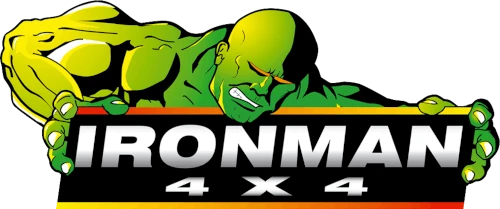What is the difference between the Original suspension and an Aftermarket suspension upgrade such as Ironman 4x4 for my 4WD?
A question I get asked most by 4WD enthusiasts.
/(SITEDIR)/cms-assets/ac94045a-424a-4164-b63d-ed55a780e4e3/ironman-suspension.png&MaxImageWidth=1000&MaxImageHeigth=1000&siteid=AE5B01F2-679E-41A6-B3E5-20F4320EDA88)
We use our 4wd vehicles in a variety of situations. These include our daily commute, Mom’s taxi, long haul highway driving, dirt road driving, trail riding, dune riding, towing, holiday overlanding Safari vehicle, etc. This is often done carrying no loads and at times carrying heavy loads or towing. To cater for this, the OE suspension designer has to design a suspension system that will work well in most cases and ends up usually working well somewhere between these two extremes. Above all, the OE suspension must ensure safety in all conditions.
This is not an easy task, and it is in fact near impossible to design a conventional suspension system that works very well in all applications. Often the 4wd owner will find that the OE suspension is lacking when the vehicle is used in a certain manner and a solution is therefore sought. We also come across instances where, every now and then, the OE suspension engineers simply get it wrong. After hundreds of thousands of test kilometers, the vehicle is deemed to be ready for launch with much fanfare. It is unwittingly released on the vehicle buying public with an inherent suspension problem when it hits the showroom floors. We buy them, we drive them and when the honeymoon period is over, we realize that the wife does not want to go with anymore because the ride is too hard, or the vehicle is unstable due to the load.
The main point of difference between a Stock OE (Original Equipment) suspension and an Aftermarket suspension product is the fact that the OE suspension has been designed to cater for and work “okay” in a wide spectrum of applications. Aftermarket suspension products offer a much better solution to a particular shortcoming in a specific application.

The Aftermarket suspension products have therefore been designed to cater for and solve specific OE suspension shortcomings. These may include increasing the load carrying capability, raising ride height for traversing severe terrain and the fitment of bigger tyres, altering the ride quality should the OE suspension be too firm or too soft, increasing the spring rate on the vehicle’s front suspension to accommodate heavy accessories such as Bull bars, Winches and second batteries and of course, our personal favorite, merely for the image.
One always must bear in mind, however, that increasing the suspension’s abilities in one area may well have some trade off in another. Fitting a heavier spring to better accommodate a full load of holiday gear will always make the ride worse when the load is removed. Increasing the ride height to accommodate bigger tyres or give the vehicle a better ability to climb that rocky trail may induce high speed handling issues. It is unfortunate that not all Aftermarket suspension companies admit to or inform the customer about this when the customer appears before them cheque book in hand.
In short then, OE suspension is ok in most cases but falls short in specific areas. Aftermarket suspension can solve these issues and ensure safe and enjoyable use of your 4wd pride and joy.
